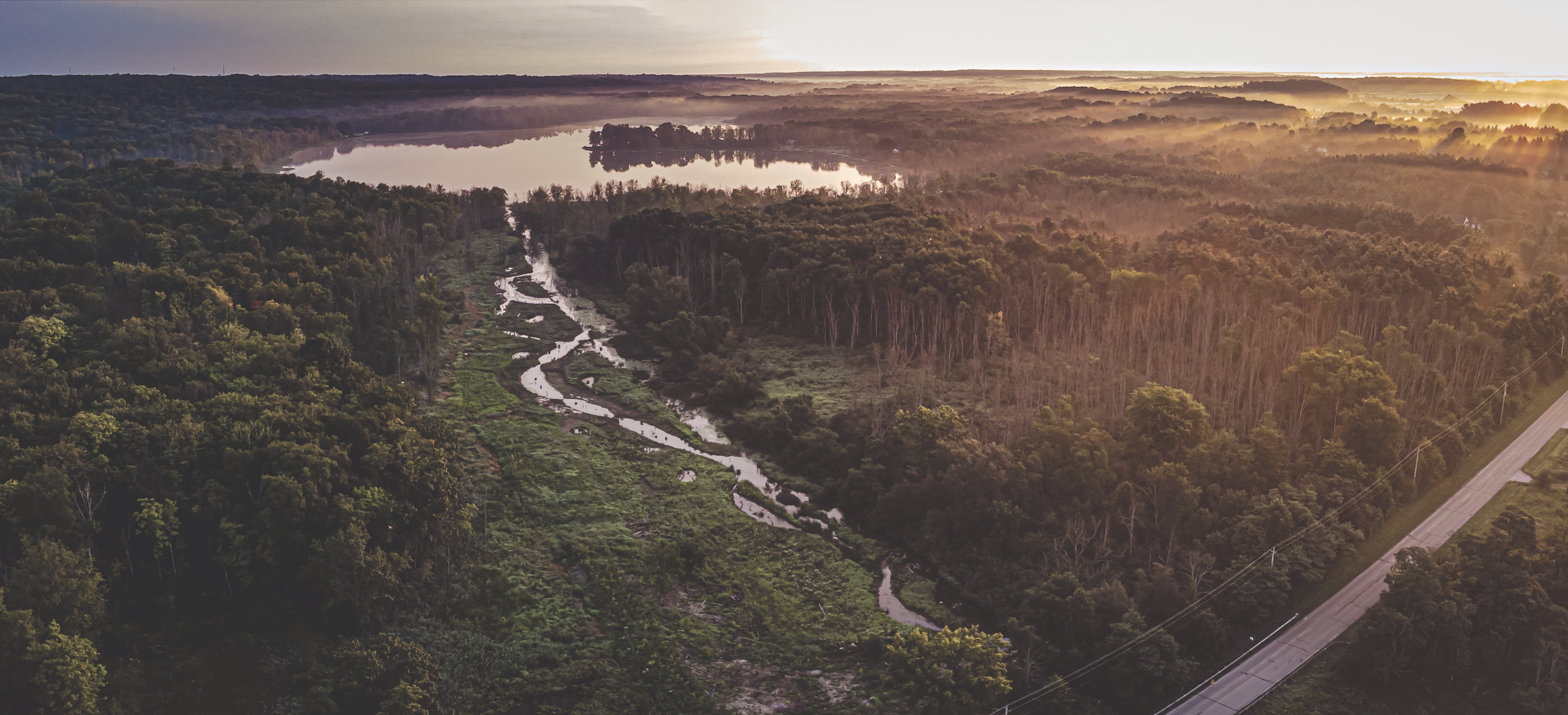ECHO Robotics Becomes AGZA AFTC® Certified
The American Green Zone Alliance (AGZA) is pleased to announce ECHO Robotics has earned an AGZA Field Tested Certification (AFTC) designation for...
When it rains, it pours … and ideally, pores in the soil soak up the stormwater. On many sites, however, and for various reasons, heavy rains often bypass this valuable step and quickly inundate stormwater infrastructure. When this occurs, not only is rain as a source of deep irrigation lost, but the pollutants it picks up along the way are carried directly into our waters. To combat this dynamic, landscapers must seek creative solutions encompassing both ecological engineering and aesthetics.
When designed properly, rain gardens are a wonderful nature-based solution that fit the bill perfectly. In my lab at Louisiana State University, we focus on optimizing rain garden systems to maximize contaminant removal from runoff water and introduce (or re-introduce) plants to the urban environment.
Contaminants commonly found in runoff vary by location and land use. Runoff from rural areas is rich in nutrients—particularly nitrogen (N) and phosphorus (P) from fertilizers. Suburban areas also contribute nutrients to runoff from lawn fertilizer. Urban areas also face excessive nutrients in runoff, as well as a wide spectrum of other contaminants of concern, but that is another article.
Why are we interested in N and P?
Because when these elements reach water bodies via runoff, harmful algal blooms can occur and ecological havoc is wreaked.
Nitrogen is a fickle fertilizer to manage. It’s readily transformed in soils through a myriad of microbial processes including nitrification, ammonification, and last, but not least, denitrification. These processes change the form and fate of applied or existing nitrogen in the landscape. While we can manage our fertilizer inputs on specific landscapes, runoff water laden with nitrogen is a problem outside our reach. So optimizing rain gardens to create desirable “transformation” processes is a sound course of action.
Enter “bioreactors,” a fancy sounding term that is actually a simple solution to excessive nitrogen. Harnessing the power of naturally occurring microbial communities (bacteria) to stimulate the desired biological reaction is the purpose of bioreactors. In this case, the desired process is denitrification— a process that converts nitrogen in soil or water into nitrogen gas, which is then released into the atmosphere. In order to stimulate denitrification, we must manage two things: available carbon and the amount of time water is part of the process.
Bacteria thrive on having plentiful sources of carbon and nitrogen—and mediating between these two elements directs specific biological processes (such as composting). In bioreactors, providing ample sources of carbon feeds the bacteria and provides a surface for a diverse community of bacterial species to grow upon. When bacteria has enough carbon to eat, it will seek out a supply of nitrogen to equilibrate biologic processes, yielding byproducts (some more desirable than others).
Bacteria need sufficient time to conduct these processes. The amount of time that contaminated runoff water spends “in treatment” in the rain garden is called “hydraulic retention time” or HRT. The ideal HRT can be hours to days. Why is this? Wet or flooded soil has little oxygen available, and when oxygen is limited, bacteria will use nitrates instead of oxygen for respiration. As nitrates are reduced through this process, they are transformed in a stepwise fashion to other forms of nitrogen. If provided sufficient HRT, nitrates can be transformed all the way to desirable nitrogen gas—which comprises the majority of our atmosphere.
If water is retained for a period too short for complete denitrification, undesirable byproducts (including certain greenhouse gases such as nitrous oxide) are produced. In essence, the removal of nitrate from runoff water can be biologically spurred by providing ample carbon to support denitrification, and the HRT necessary to allow complete denitrification.
Bioreactor systems have been popular in agronomic fields in the upper Midwest for several decades, often observed as a lined trench filled with woodchips (a readily available carbon source). My lab focuses on integrating elements of these systems into rain garden media specifically incorporating and evaluating a range of carbon materials (such as woodchips and other locally sourced carbon residues) and blend ratios to support both nitrate removal and proper plant growth conditions.
Phosphorus is the other primary element of interest when it comes to addressing ecological problems. In fact, it may be the element of greater concern when considering freshwater systems or the potency of small amounts of P in runoff. Removing P presents a different challenge than N—as the former is more readily physically filtered, while removal of the latter is biologically-based, as described above.
Phosphorus readily binds to clay particles in soil, but clay-based soils can run out of room to bind with P. What happens when a soil or site becomes saturated with P? Phosphorus will not be “gassed-off” like nitrogen and instead will remain until removed by people or plants (more on this below).
As a result, identifying materials that bind with P for its removal is another area of my research. We evaluate a range of materials to blend into typical rain garden growing mediums to support sequestration of P. Optimizing rain garden medias to allow better water storage and drainage, while also providing more binding sites for P can allow greater volumes of runoff water to be treated and more contaminants to be removed.

Integrating plants into rain gardens may seem like an afterthought, but a bed of media alone will not impress the community. A landscape bed filled with plants creates an appreciable aesthetic that also complements contaminant removal. Not only will the plants provide beauty, but they will uptake N and P from the runoff water, and the P bound to particles, to reopen P capture.
Wondering what plants to use? Carefully selecting plants that work in periodically wet to consistently saturated soils is necessary. It’s also a great idea to start with native plants. In South Louisiana, where we are no stranger to wet conditions, we are evaluating the perfor- mance of native species such as Bald Cypress, Sweetbay Magnolia, Virginia Willow, and River Birch in various media blends. Our goal is to evaluate plant performance under the frequently flooded conditions of rain gardens and understand the impact these species may have on the garden’s function.
Ultimately, using rain gardens as bioreactors is a creative solution to addressing the issue of excess nutrients in stormwater runoff. These systems provide an engineering benefit, an ecological benefit, and an aesthetic element. By ensuring adequate carbon and P binding materials in rain garden medias, intentionally selecting plant species, and allowing adequate time for treatment, optimized rain gardens represent a creative, nature-based approach to some of our most pressing issues in the landscape.
Assistant Professor of Landscape Horticulture at LSU Ag Center dabdi@agcenter.lsu.edu

The American Green Zone Alliance (AGZA) is pleased to announce ECHO Robotics has earned an AGZA Field Tested Certification (AFTC) designation for...

INDIANAPOLIS, IN, UNITED STATES, April 12, 2024—EINPresswire.com—Groundwork, a distinguished name in virtual sales software for home improvement,...

Beavers Creek Post Restoration